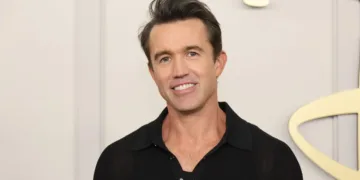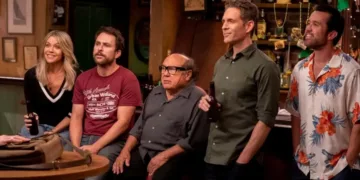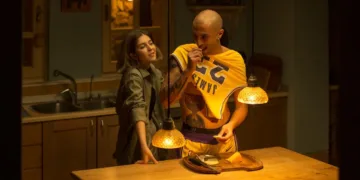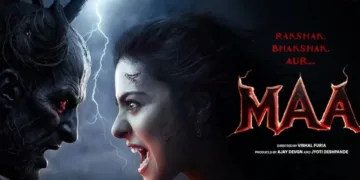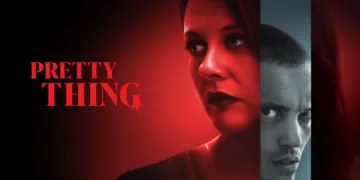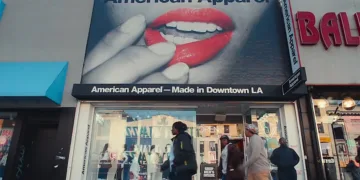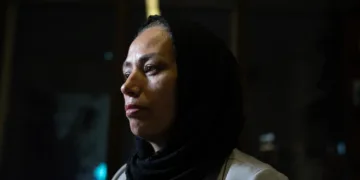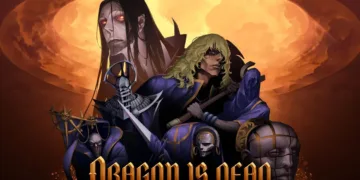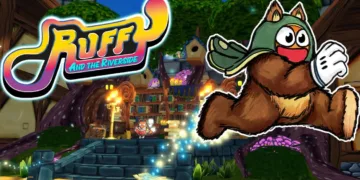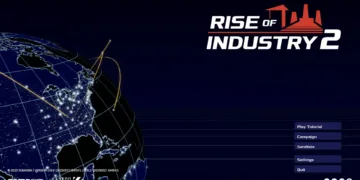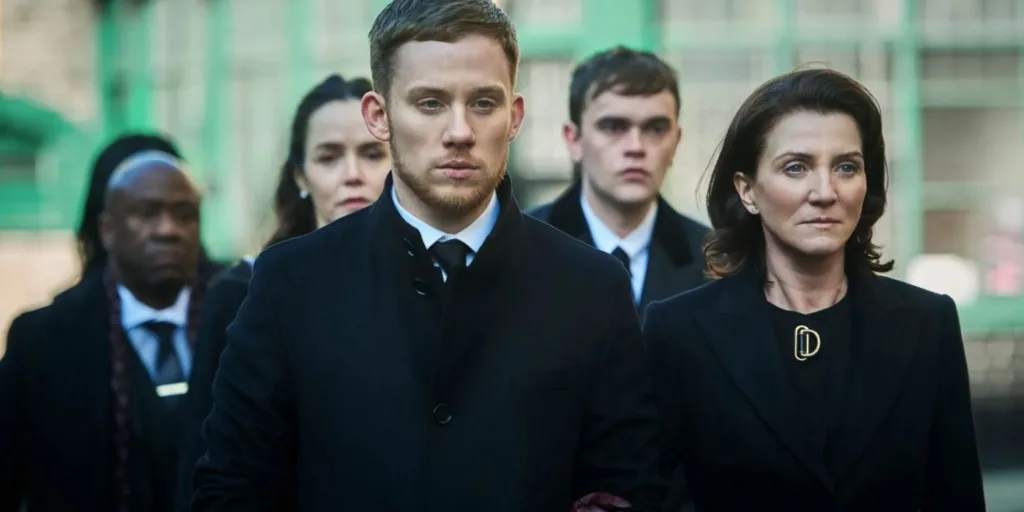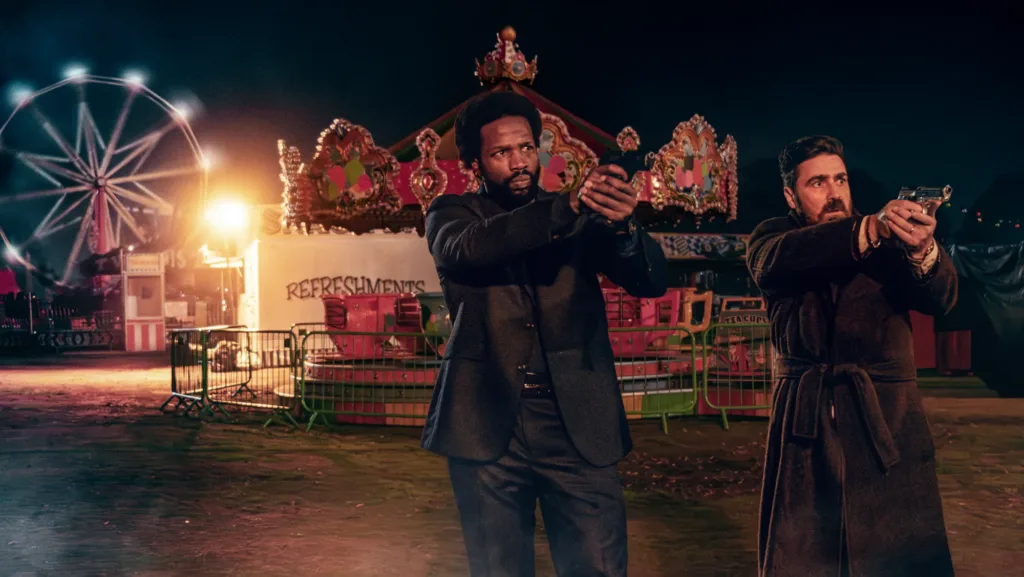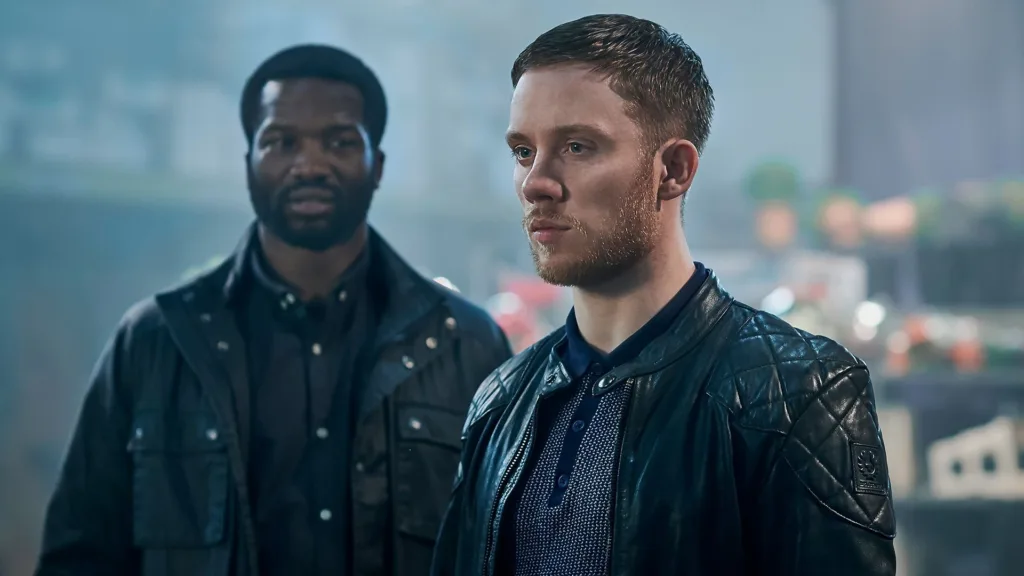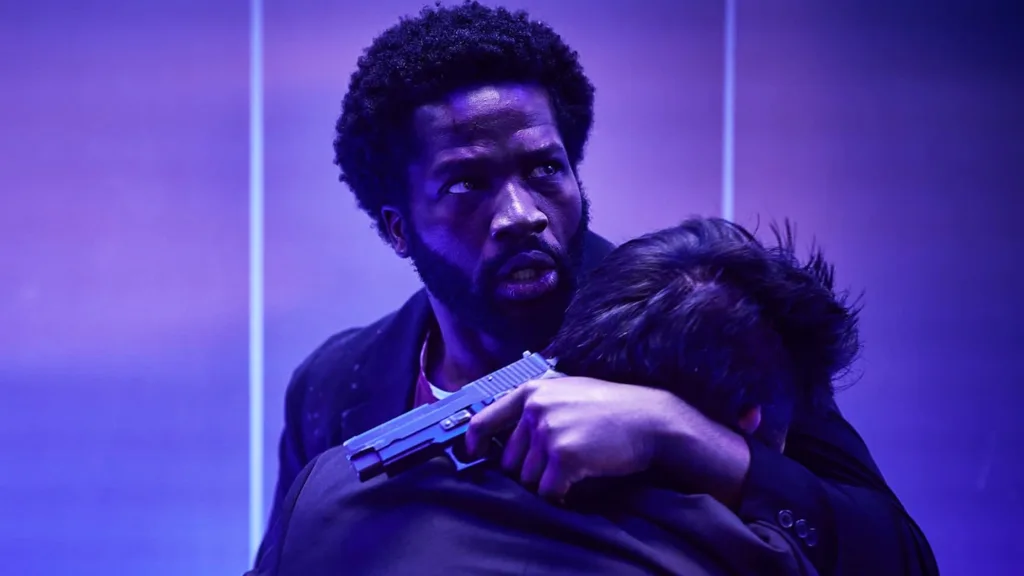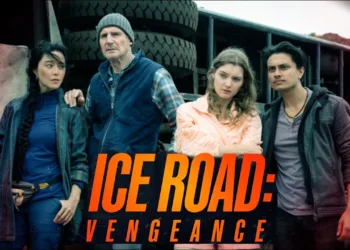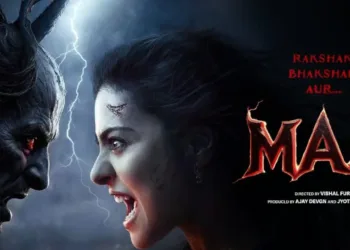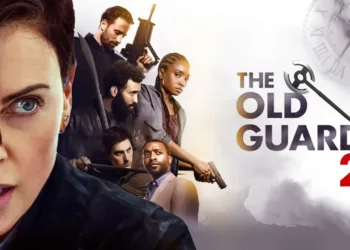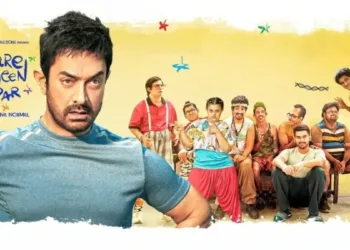The series introduces a grim and stylish portrayal of London’s criminal underworld, where a maze of illicit deals and violent clashes creates an atmosphere of unyielding tension. The world is painted with stark colors and bold strokes, portraying intense conflicts and power struggles that grip the viewer with each scene.
In previous seasons, a complex network of criminal alliances and backstabbings was built, gradually transforming a once undercover cop into a dominant figure in the criminal hierarchy. Now, as the narrative shifts, the central character has fully embraced his new role, navigating an environment where trust is scarce and betrayal is a constant companion.
This latest installment presents a heightened sense of danger, marked by raw displays of force, unexpected armaments, and shocking twists that challenge the established order. Production values have reached a new level, reflecting a keen eye for visual detail and sound that captures the pulse of a city in chaos.
In the following analysis, I will examine the storytelling structure, character evolution, high-octane action sequences, and technical precision that define this season, all while considering its cultural impact and resonance with current filmmaking trends.
Plot and Narrative Structure
The season opens with a dramatic spark: a tainted drug shipment that sends shockwaves through London’s criminal networks. This shocking event ignites a violent power tussle, as longstanding factions and unexpected players compete for control.
The fallout is immediate—chaos erupts on the streets, and the fragile balance of power is shattered. In a matter of moments, familiar alliances are questioned and fresh rivalries ignite, setting the stage for a season marked by intense street confrontations and backroom negotiations.
The narrative centers around the ripple effects of this catastrophic mishap. As various gangs scramble to fill the power void, secret meetings and tense exchanges become the norm. Characters known for their ruthless ambition now face the uncertainty of shifting loyalties.
These exchanges serve as windows into the inner workings of a criminal empire, where every whispered deal carries life-changing implications. The intricate network of alliances, betrayals, and covert agreements recalls the edgy, spontaneous style of early French New Wave cinema—a style that has always fascinated me for its unconventional approach to storytelling.
Balancing rapid sequences of explosive action with more thoughtful, reflective moments, the season manages to weave high-octane scenes with glimpses into its characters’ troubled pasts. Brief flashes of earlier events provide context, offering insight into why these figures have become so hardened over time.
The narrative structure makes effective use of non-linear storytelling, ensuring that past conflicts are interlaced with present dilemmas. This method, reminiscent of the narrative risks taken by directors like Godard, adds depth to the viewing experience by layering personal history with immediate peril.
The result is a storyline that feels both relentless and carefully composed, delivering a fresh look at criminal dynamics while maintaining a rich, interconnected plot that rewards attentive viewing.
Character Arcs and Personal Struggles
Elliot Carter takes center stage as a man torn between his past life in law enforcement and his current role as a feared member of the criminal underworld. His transformation is marked by moments of internal strife that expose his lingering doubts and the weight of his new identity. I found it refreshing to see a character who, much like the protagonists in films by Godard or Truffaut, is caught in a tug-of-war between a former self and the demands of an unforgiving new world.
Sean Wallace’s role, though altered by circumstances, injects a sense of unease into the narrative. His character shifts from an influential force in earlier chapters to a figure whose current state amplifies tension. The contrast between his past prominence and his present vulnerability creates a dynamic that keeps the story charged with uncertainty.
Lale emerges as a figure of both strength and fragility. Her scenes are marked by moments where raw emotion and determination play out vividly. Her struggles add a human touch to a narrative dominated by stark choices and relentless ambition. I was struck by how her personal battles mirror the challenges seen in independent films, where character depth often carries the weight of the plot.
New additions, such as the mysterious hitman and the determined mayor, introduce fresh layers to the mix. They shape the narrative with their distinct outlooks and drive shifts in the ongoing power struggle. Their presence complicates alliances and fuels a series of conflicts that ripple through every encounter.
Relationships among these figures are a study in shifting allegiances. Family ties, mentorship, and rivalries are all at play, offering moments of raw honesty amid the relentless pace of criminal ambition. These personal conflicts invite viewers to find echoes of their own struggles in the characters’ battles, creating scenes that feel grounded even amid the chaos.
Action, Choreography, and Visual Style
This season delivers moments that grab you immediately—a striking fairground showdown and tense encounters in abandoned office blocks. The set pieces serve as both high-impact spectacles and carefully composed scenes that guide the narrative’s pulse.
The camera work stands out with rapid cuts that capture the raw energy of the street battles, paired with slow-motion shots that allow you to appreciate every precise movement. This approach reminds me of the kinetic energy found in certain French New Wave classics, where each frame is a study in tension and release.
Fight sequences benefit from a creative twist, as combat evolves beyond traditional hand-to-hand confrontations. Unconventional items are transformed into tools of survival, such as the striking instance where an umbilical cord plays a role in a desperate fight.
These moments fuse close-quarters brawling with high-intensity shootouts, generating a sense of unpredictability that keeps you on edge. The balance between gritty melee and ballistic showdowns enriches the viewing experience and adds an unexpected layer of excitement.
Visual storytelling is enhanced by a deliberate mix of practical stunts and digital effects, which together create scenes that feel both visceral and artfully rendered. The choice of settings—ranging from rain-slicked urban streets to eerily deserted interiors—contributes to an atmosphere that is as unsettling as it is visually captivating. Festive elements interspersed among the chaos add an unexpected contrast, evoking a feeling reminiscent of moments in films by Noah Baumbach, where the mundane collides with the extraordinary.
Production values are high, with smooth transitions that keep the momentum intact and a sound design that amplifies the physicality of each fight. The series clearly pays close attention to the integration of visual and auditory cues, ensuring that every explosive encounter is as immersive as it is memorable.
Direction, Production Values, and World-Building
The new director’s approach reflects his background in high-intensity filmmaking, evident in the precise management of explosive scenes alongside quieter, character-focused moments. His style keeps the series steady even amid rapid, chaotic sequences.
The depiction of London emerges as a raw, unpolished canvas that exudes an unmistakable grit while maintaining a sharp, stylistic edge. The interplay of contrasting lighting and carefully chosen color schemes brings out details in urban decay and the underworld’s harsh realities.
The sound design plays a significant role, with a score that pulses in sync with the action and sound effects that punctuate each confrontation. There is a musical quality reminiscent of the spontaneity found in jazz performances, lending the scenes an organic texture that feels both immediate and deeply rooted in the city’s pulse.
The series constructs a world where familiar urban landscapes are reimagined into a complex environment that hints at the city’s hidden layers. This crafted reality captures a sense of social and political tension, presenting a detailed picture of London that is both immersive and thought-provoking. The overall visual and auditory execution helps create a rich backdrop against which the drama unfolds.
Themes, Symbolism, and Underlying Messages
The series examines the harsh realities of violence and the toll it exacts on both individuals and communities. Brutality is portrayed as a double-edged weapon; it spurs the rise of ruthless figures while leaving deep personal scars. The narrative makes clear that the constant use of force carries heavy consequences, affecting both its wielders and those caught in its path.
The interplay of power, loyalty, and betrayal stands as a reminder of the steep cost of ambition in a world without firm ethical guides. Trust proves fragile as alliances shift unexpectedly, with betrayals marking a central aspect of the characters’ lives.
Family ties and personal connections emerge as sources of strength while also sparking intense conflict, mirroring inner battles with identity and change. Political undercurrents interlace with the criminal plot, hinting at the sway of influential figures on the underworld’s operations.
Repeated visual symbols, such as unconventional weapons and distinct settings, reinforce key ideas about control and survival. The series invites reflection on how personal choices mirror the broader struggle for dominance, with every scene resonating with raw intensity.
Impact and Outlook
This season presents a striking combination of layered storytelling, memorable character journeys, and striking visual encounters that keep viewers fully engaged. The series crafts a complete underworld where every conflict, whispered betrayal, and unforeseen alliance contributes to a sense of immediacy.
The narrative pairs explosive moments with quieter, introspective scenes, ensuring each twist carries significant weight and every confrontation resonates on multiple levels. The detailed depiction of a reimagined London invites viewers to experience a city that is both recognizable and transformed by an undercurrent of disorder.
The interplay between high-adrenaline action and subtle character studies produces an experience that is thrilling yet deeply textured. Technical components such as crisp editing, inventive camera movements, and a soundtrack that mirrors both tension and relief all serve to shape a distinct portrait of urban strife.
Personal rivalries mix with large-scale power struggles, offering a layered view of ambition and sacrifice that leaves a lasting impression as the credits roll. The season’s exploration of inner conflicts, alongside the broader clash for control, creates a narrative that speaks to current societal moods and cinematic experimentation, suggesting intriguing directions for future episodes.
The Review
Gangs of London Season 3
Gangs of London Season 3 delivers a relentless mix of high-impact action, complex characters, and a reimagined urban landscape that resonates with modern audiences. The series deftly blends raw physicality with thoughtful narrative layers, maintaining a bold visual and auditory flair throughout. Its innovative storytelling and balanced pace affirm its place as a standout crime drama that pushes creative limits while engaging viewers on multiple levels.
PROS
- Gripping, well-choreographed action sequences
- Multi-layered narrative with compelling character arcs
- Striking visual style and immersive sound design
- Bold reimagining of urban underworld dynamics
- Consistent tone and tension throughout
CONS
- Occasional narrative complexity may confuse some viewers
- Certain supporting roles feel underdeveloped
- High levels of violence might not appeal to everyone



















